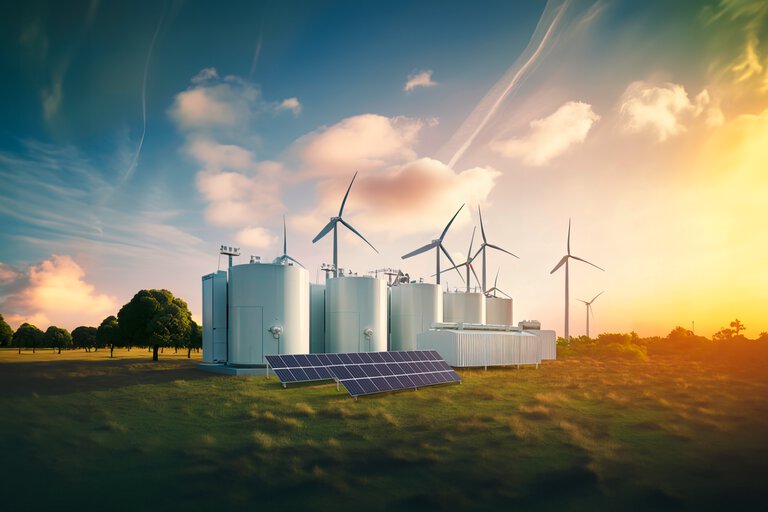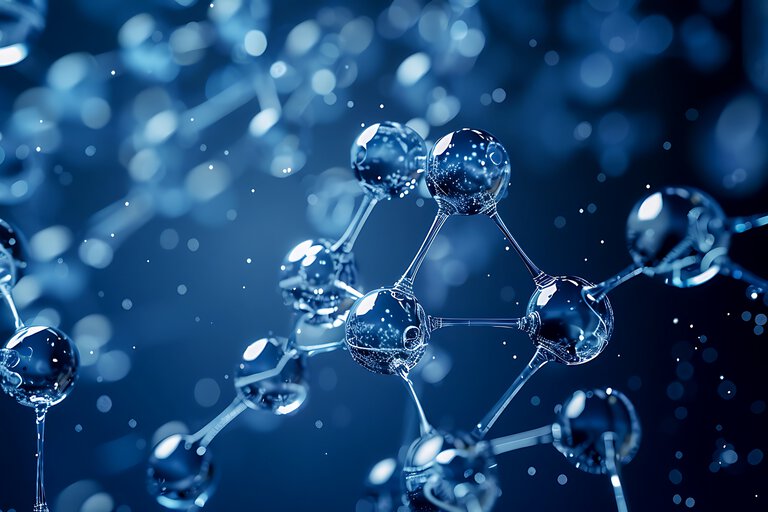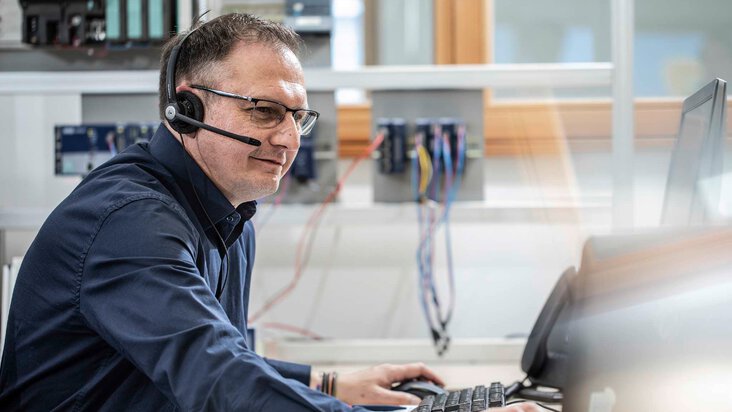
Hydrogen sensors – the most important facts at a glance
Hydrogen, often referred to as H2, is considered a key element of the energy transition. Produced from renewable energies, it forms a C02-free bridge between the energy sectors of electricity, heat, and transportation (sector coupling). Hydrogen also enables large amounts of energy to be stored for several months, similar to natural gas today. Hydrogen as an energy source can therefore significantly reduce CO2 emissions. In the following article, you can find out more about the areas of application for hydrogen and the challenges for the sensor technology used.
Table of contents
What is a hydrogen sensor?
A classic hydrogen sensor detects and measures the concentration of hydrogen gas in the application environment. In addition, sensors for numerous other measured variables are also used in the production of hydrogen and in H2 applications. The smooth handling of hydrogen therefore requires the interaction of different sensors.
Where are hydrogen sensors used?
Typical applications can be found throughout the energy sector in the production, storage, transportation, and use of H2. These include in particular electrolyzers, storage systems, hydrogen filling stations, synthesis plants, and fuel cell systems. In addition, there are traditional natural gas systems such as gas burners and gas engines that are being converted to run on hydrogen. In industry, hydrogen is used as a raw material for the production of ammonia, methanol, and other chemical compounds.
What role do hydrogen colors play in the selection of sensor technology?
Whether blue, grey, turquoise, or green hydrogen: the color of hydrogen does not play a central role in the selection of suitable measurement technology. After all, the color designation does not stand for the properties of the gas, but for the type of extraction. Green hydrogen, for example, is a climate-neutral gas, as it is produced 100 % from renewable energies using electrolysis. With gray hydrogen, on the other hand, the hydrogen in the natural gas is steam-reformed and the CO2 released in the process is released into the atmosphere. Blue hydrogen is produced in the same way as gray hydrogen, but the resulting CO2 is stored. Turquoise hydrogen is produced through the thermal decomposition of methane.
What challenges do H2 sensors face?
H2 is the element with the lowest density in the periodic table. Hydrogen is 14 times lighter than air, has the highest diffusion capacity compared to other gases, and places special demands on the material for sensors and seals. This means that not every sensor in industrial applications is suitable for direct contact with hydrogen. In addition, the high calorific value and high flammability of this "lightweight" gas require special attention with regard to functional safety and explosion protection. To ensure safe operation, leaks at storage tanks or during transportation must therefore be avoided at all costs.
Which sensors are needed when using hydrogen?
In addition to hydrogen sensors for measuring the concentration of hydrogen, sensors for pressure, temperature, humidity, flow, level, and conductivity are mainly used. Modern digital sensors offer the option of being integrated into an intelligent sensor network via PROFIBUS/PROFINET communication and IO-Link or transmitting the measurement data directly to the cloud via Single Pair Ethernet (SPE). This way, the measurement and process data can be recorded and analyzed in real time.
What types of hydrogen sensors are there?
Hydrogen sensors work in different ways, depending on the underlying technology:
Electrochemical sensors
These H2 sensors use an electrochemical cell in which a reaction between hydrogen and an electrode generates a measurable electrical signal. They are well suited for precise measurements at low concentrations.
Semiconductor gas sensors
Semiconductor gas sensors measure the changes in the electrical properties of a semiconductor material caused by the presence of hydrogen. They are relatively inexpensive and respond quickly, but can be affected by other gases.
Optical sensors
An optical measurement system uses the principle of light absorption or scattering to detect hydrogen concentrations. The sensor technology has a high degree of accuracy and is often robust, but can be expensive.
Thermal conductivity sensors
These hydrogen sensors measure the changes in the thermal conductivity of the air caused by the presence of hydrogen. They are well suited to measuring high concentrations, but are less sensitive at low concentrations.
Where are hydrogen conductivity sensors used?
The reliable production of ultrapure water from drinking water, purified well water, or seawater is a fundamental prerequisite for the electrolysis of water. After all, all minerals and salts must first be removed by reverse osmosis or other techniques to be able to produce hydrogen of the required purity. A comparative conductivity measurement before and after reverse osmosis ensures the success of the water treatment. This often involves the use of multi-channel measuring devices that can measure, control, record, and display other measured variables in addition to conductivity, such as the flow rate, pH value, ultrapure water resistance, or hydrogen peroxide content.
Which hydrogen pressure sensors are used?
In the most common hydrogen applications, the pressure of gaseous hydrogen must be measured. Low pressures prevail in electrolyzers and fuel cell systems. So-called piezoresistive sensors are predominantly used here. Hydrogen is compressed to very high pressures of up to 700 bar for transportation and storage. High-pressure sensors using thin-film technology are then used for pressure measurement.
Different versions of pressure sensors are available for all pressure levels (e.g. with or without local display). Special approvals guarantee safety when handling hydrogen (e.g. for explosion protection [ATEX], functional safety [SIL] or for use on ships [DNV]).

Hydrogen pressure sensors from JUMO
What are hydrogen temperature sensors made of?
If temperature sensors are to be in direct contact with H2, the sensor material in contact with the medium must be selected appropriately. To ensure good resistance in hydrogen, the sensor tube is normally made of stainless steel AISI 316L (material number 1.4404), a stainless, austenitic chromium-nickel-molybdenum steel. For particularly high temperatures, such as those occurring in solid oxide fuel cells (SOFC) or electrolyzers (SOEL), sheath thermocouples made of the material 2.4816, a non-hardenable nickel-chromium-iron alloy, are also used.

JUMO temperature probes for hydrogen applications
Which technologies are used for hydrogen flow measurement?
The transmission of hydrogen is being used in more and more industrial applications. There are also efforts and real projects in which hydrogen is mixed into the existing natural gas network. There are also plans for a European hydrogen backbone, a pipeline network that will transport pure hydrogen within Europe. As a result, hydrogen flow meters are becoming increasingly important.
The technologies most frequently used for flow measurement are the ultrasonic measurement method, measurement according to the Coriolis principle, and the variable area method. The exact amount of gas can then be calculated, taking pressure and temperature conditions into account.
What should be considered when choosing hydrogen level sensors?
For the intermediate storage and transportation of liquid hydrogen, liquid hydrogen derivatives or liquid organic hydrogen carriers (LOHC), special tanks with sophisticated sensor technology are required for level measurement and reliable monitoring. The choice of a suitable measuring device depends on the respective area of application. If it is only necessary to detect or prevent dry running or overfilling, limit switches are usually sufficient. If the exact fill level of the hydrogen tank needs to be measured, hydrostatic fill level sensors or a float switch can be used, for example.
What does the HGV 3.1 test say?
The HGV 3.1 test is a standardized test procedure according to the CSA ANSI HGV 3.1 standard, which was developed specifically for hydrogen refueling systems. It is conducted by independent testing laboratories and specifies the requirements for the safety, reliability and performance of components in hydrogen applications, such as those found in fueling stations, electrolyzers and storage systems. The properties tested include, among others, leakage rate, hydrostatic strength, vibration resistance, stress corrosion cracking and electrical insulation. Products that pass the test are considered safe for use in demanding hydrogen applications.
Do hydrogen sensors need to be calibrated?
All sensors used in hydrogen solutions should be calibrated regularly to meet the high requirements in H2 infrastructures and to ensure precise measurements. After all, drift due to ageing can lead to changes in sensitivity and accuracy. The frequency of calibration depends on various factors, such as the sensor type, the operating conditions and the specific requirements of the application. In safety-critical applications, such as in the chemical industry or when using hydrogen as a fuel, regular and careful calibration is particularly important.
Which H2 sensors are the right ones?
Depending on the individual requirements, several different sensor types are generally used in hydrogen applications. The better these are coordinated, the better the process efficiency. Automation and evaluation of process data via modern cloud solutions are also possible. In order to meet the complexity of all requirements, it can be helpful to turn to an experienced sensor manufacturer.
- ${title}${badge}



